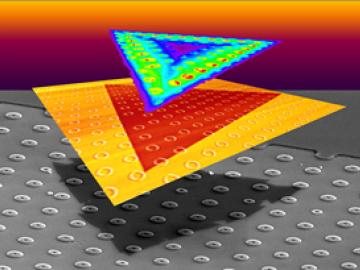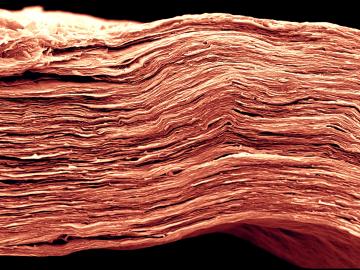
Filter News
Area of Research
- (-) Materials (48)
- Advanced Manufacturing (2)
- Biology and Environment (11)
- Computational Engineering (1)
- Computer Science (4)
- Energy Science (37)
- Fuel Cycle Science and Technology (1)
- Fusion and Fission (11)
- Fusion Energy (1)
- Isotope Development and Production (1)
- Isotopes (3)
- Materials for Computing (5)
- National Security (11)
- Neutron Science (23)
- Nuclear Science and Technology (9)
- Quantum information Science (1)
- Sensors and Controls (1)
- Supercomputing (40)
News Topics
- (-) Artificial Intelligence (4)
- (-) Biomedical (3)
- (-) Energy Storage (19)
- (-) Machine Learning (2)
- (-) Nuclear Energy (2)
- (-) Physics (14)
- (-) Quantum Science (10)
- (-) Security (1)
- (-) Summit (1)
- 3-D Printing/Advanced Manufacturing (13)
- Advanced Reactors (1)
- Bioenergy (8)
- Biology (4)
- Buildings (2)
- Chemical Sciences (20)
- Composites (3)
- Computer Science (8)
- Coronavirus (2)
- Critical Materials (8)
- Cybersecurity (3)
- Environment (7)
- Exascale Computing (1)
- Frontier (2)
- Fusion (2)
- Grid (2)
- High-Performance Computing (2)
- Isotopes (5)
- ITER (1)
- Materials (38)
- Materials Science (35)
- Microscopy (12)
- Molten Salt (2)
- Nanotechnology (21)
- National Security (3)
- Neutron Science (18)
- Partnerships (8)
- Polymers (6)
- Quantum Computing (1)
- Transportation (4)
Media Contacts

Energy storage startup SPARKZ Inc. has exclusively licensed five battery technologies from the Department of Energy’s Oak Ridge National Laboratory designed to eliminate cobalt metal in lithium-ion batteries. The advancement is aimed at accelerating the production of electric vehicles and energy storage solutions for the power grid.

An international team of researchers has discovered the hydrogen atoms in a metal hydride material are much more tightly spaced than had been predicted for decades — a feature that could possibly facilitate superconductivity at or near room temperature and pressure.

A team led by scientists at the Department of Energy’s Oak Ridge National Laboratory explored how atomically thin two-dimensional (2D) crystals can grow over 3D objects and how the curvature of those objects can stretch and strain the

OAK RIDGE, Tenn., May 7, 2019—Energy Secretary Rick Perry, Congressman Chuck Fleischmann and lab officials today broke ground on a multipurpose research facility that will provide state-of-the-art laboratory space


A team of scientists has for the first time measured the elusive weak interaction between protons and neutrons in the nucleus of an atom. They had chosen the simplest nucleus consisting of one neutron and one proton for the study.

Three researchers from the Department of Energy’s Oak Ridge National Laboratory have been elected fellows of the American Physical Society (APS). Fellows of the APS are recognized for their exceptional contributions to the physics enterprise in outstanding resear...

The Department of Energy’s Oak Ridge National Laboratory is now producing actinium-227 (Ac-227) to meet projected demand for a highly effective cancer drug through a 10-year contract between the U.S. DOE Isotope Program and Bayer.


